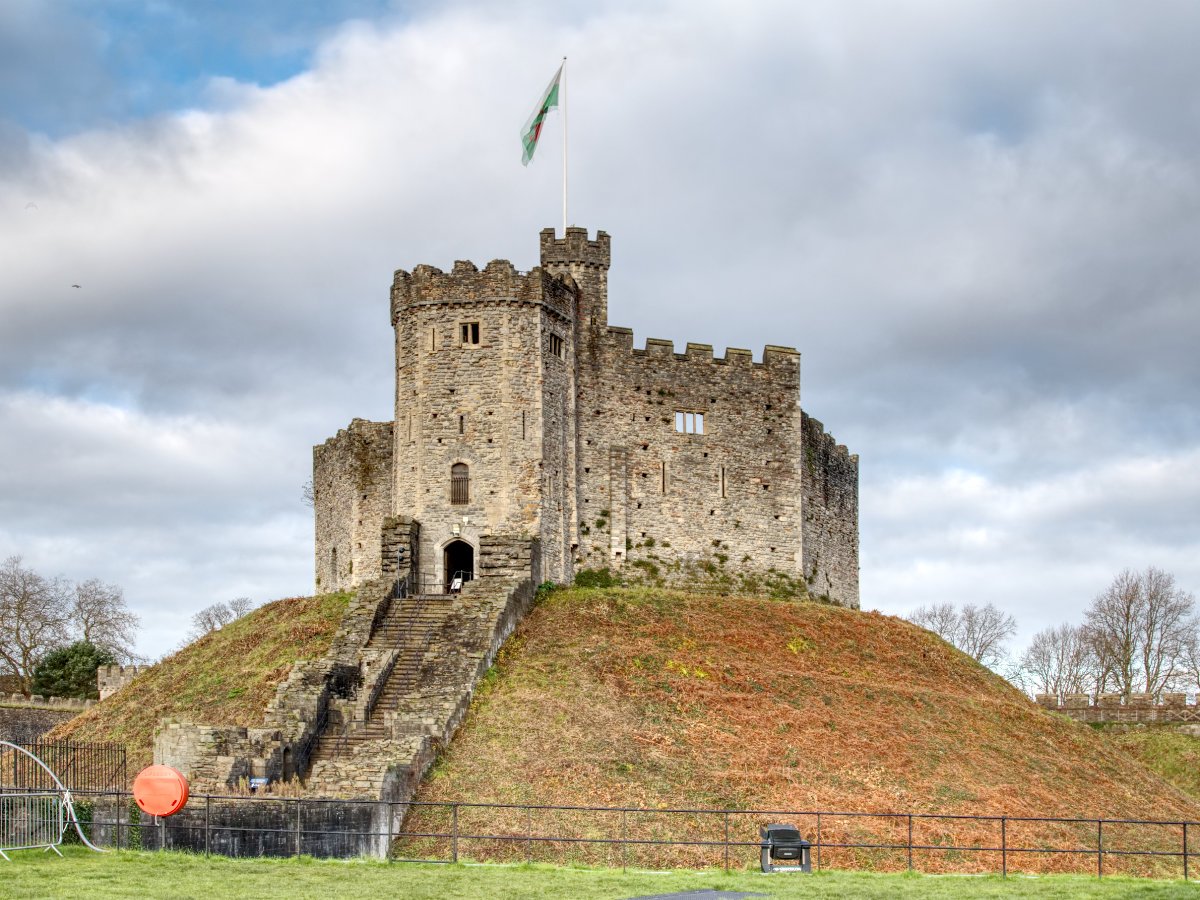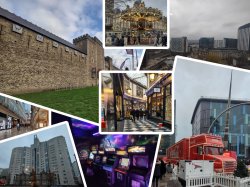Wales is awash with some of the most spectacular castles in our nation, but you often find major cities forsake their history in the name of progress - not Cardiff, they appear to be striking a wonderful balance between growing as any capital should with keeping some of the cities classical charm. Cardiff Castle sits right where the action is in the city centre and could have easily been relegated to a footnote in the city's history, one to be paved over or replaced by skyscrapers, but instead, it is beautifully preserved and a wonderful attraction well worth any visitors time! There's even a whole host of options for all price points, with a surprisingly generous offering completely free. The cherry on top, of course, is that by being in Cardiff you can have an awesome day out in a city chock full of things to see and do as the perfect compliment to your tour around the castle.
Cardiff castle is sandwiched between the beautiful park to the north and Cardiff's shopping heartland to the south, with the A4161 and River Taff forming a clear boundary between the urban sprawl and this historic attraction. To the north-east is Cardiff University, as well as council and government buildings that are a beautiful bit of history in their own regard with a handful of monuments as well the National Museum Cardiff. If you are driving to visit the castle then parking in the immediate area is limited, but you are, of course, in the middle of a sprawling capital so there are a handful of car parks just a stone's throw away - there are a few marked out on the map above, but the nearest public car parks would either be the NCP Car Park Cardiff Westgate Street or NCP Car Park Cardiff Greyfriars in the city or the Sophia Gardens Pay and Display Car Park, which allows you to walk through the park to reach the castle. You could probably guess considering this is a capital city, but public transportation links are strong in the area, with Cardiff Central train station less than a 10-minute walk away and bus stops littered all around the city there are countless ways to get very close to the castle's entrance.
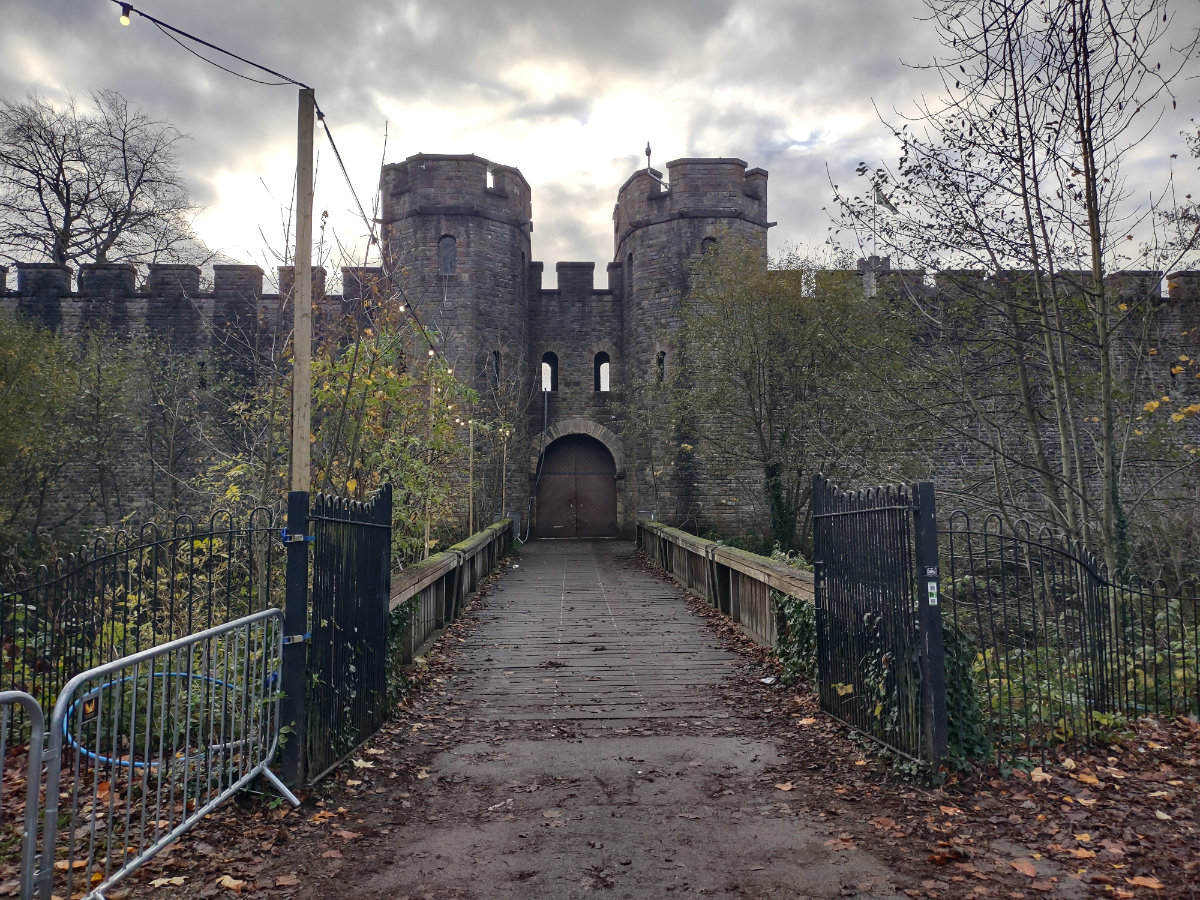
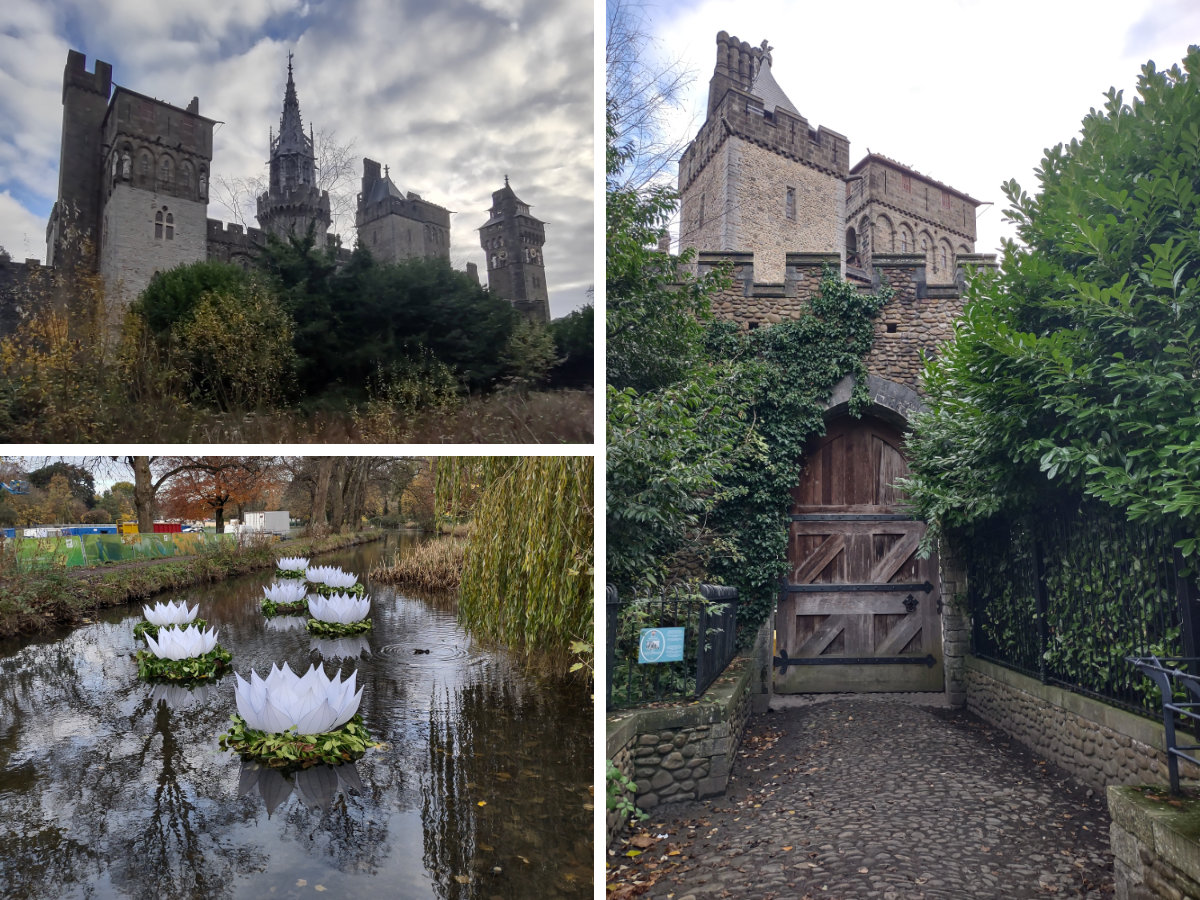
Our journey started from the top of Queen Street where we crossed over to walk a loop north in the shadow of the colossal walls all around the outer perimeter of Cardiff Castle. We walked up towards the grand Cardiff Crown Court building, passing the little Friary Gardens on our right and eventually turning left, still following the walls, and passed into Bute Park - this here is a great option if you wish to extend your walk as the park runs for miles to the north, following the path of the River Taff all in glorious natural surroundings. If you opt to follow the walls around you will pass a few little landmarks, including the North Gate and the feeder canal before following the park round in the shadow of the Castle Lodgings. After the West Gate, the paths in the park will briefly turn away from the castle walls, where you will eventually link back up with the road at Cardiff Bridge, turning left you will now be walking beneath the Animal Wall, a wall that, as the name may give away, has statues of various animals along the top. Some of the stonework here dates back to the 1880s, with some newer additions added later - you can tell the original animals as they have glass eyes that feel like they follow you as you walk past. The Animal Wall will link up with the castle walls at the foot of the Clock Tower, a stunning ornate structure worth taking a look at before you reach the South Gate, just a stone's throw from the tower.
After making your way in through the South Gate you will be greeted by a peaceful expanse of perfectly manicured grass with intertwined paths as well as the imposing Norman Keep in front and the Castle Lodgings off to your left or, if you visited at Christmas as we did, you will see a Christmas Wonderland with an array of attractions and places to eat and drink. Obviously, the Christmas event at the castle could feel a little jarring if you were expecting a tranquil walk in historical surroundings, but it doesn't detract from Cardiff Castle and things like the Norman Keep are still just as impressive, albeit you may have to explore a little more to find grab a clear photo of it. Getting the photo is easier than you might expect because a considerable area inside of the walls is a dedicated Public Square, free to enter and explore. With most castles charging the second you try to step in across the moat, this was a nice surprise and we spent a good amount of time just wandering around (albeit, this was mostly looking around the Christmas Wonderland, it was still a great surprise and there were still other nice surprises such as a section of battlement we could walk, the Trebuchet and what I believe to be a 25-PDR Field Gun).
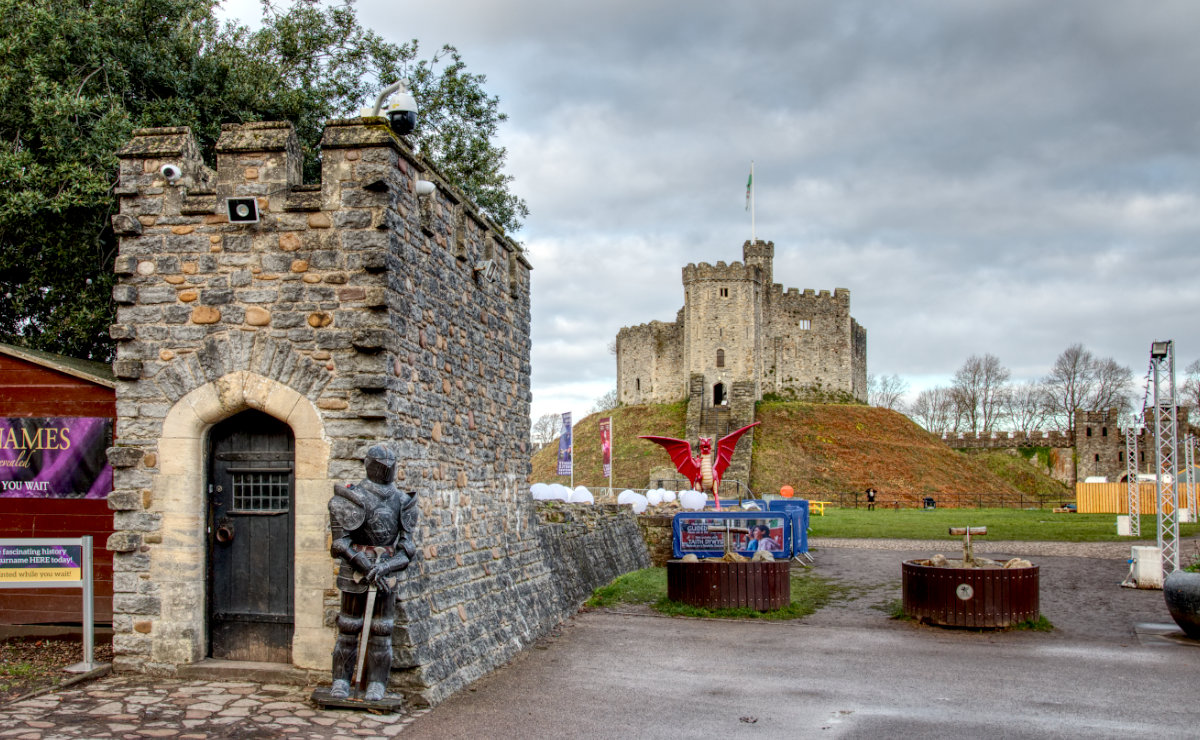
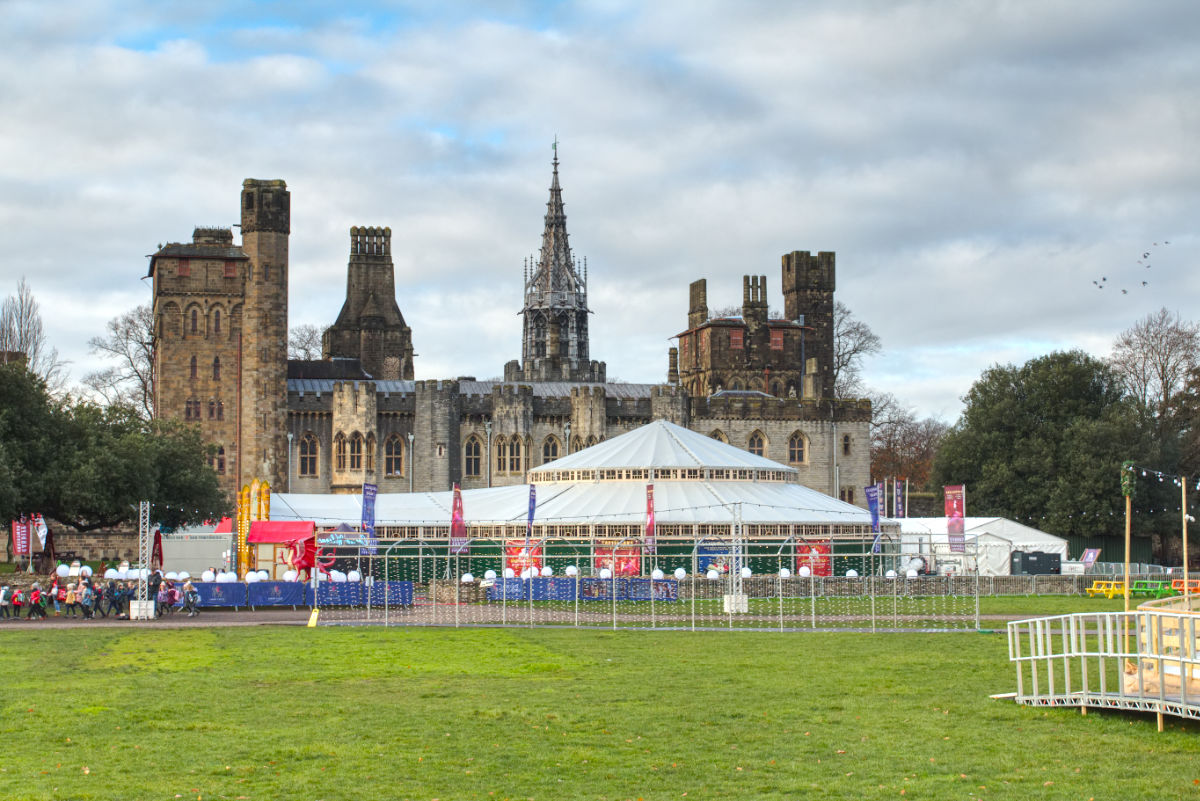
To explore beyond the Public Square at Cardiff Castle you will need to head over to the Ticket Office, on your right when you first pass through the South Gate (which is also a café and gift shop). We were unfortunately too strapped for time, being pushed by a looming hotel check-out time, so we had to pass on exploring further as we didn't want to risk rushing through it and not being able to make the most of it. Admission is split into access and guided tours, with some sections exclusively accessible by tour only - their full breakdown of admission prices can be found here on their website, with the best bit being a massive discount for locals in the form of a castle key. I will use this moment to reiterate that even if you are strapped for time as we were, you should absolutely still make a quick stop at the castle because of how great the free section is, while I am excited to return and see more I didn't leave feeling like I had wasted a stop and we got some lovely souvenirs on our way out.
If you do decide to venture into Cardiff Castle then you can expect to see some amazing things, just look at some of the amazing rooms inside the castle apartments - the Arab Room in particular looks absolutely spectacular! Obviously, the Norman Castle is well worth a look, but there are also the Black Tower and Clock Tower tours that offer an amazing opportunity to see some more of the wonderous history around the castle, I honestly think all of the castle tours look well worth your time and you can check out the full list here. We cannot wait to return, ideally in the summer months, and check out all that Cardiff Castle has to offer; it is pretty clear that there is so much to see and do around the castle that you could easily make multiple visits without running out of things to see. The excitement doesn't stop there either, with Cardiff Castle also acting as an events venue - what an extraordinary way to see your favourite band or live event, with massive acts and even things like huge-scale promotions like WWE events visiting the castle from time to time.
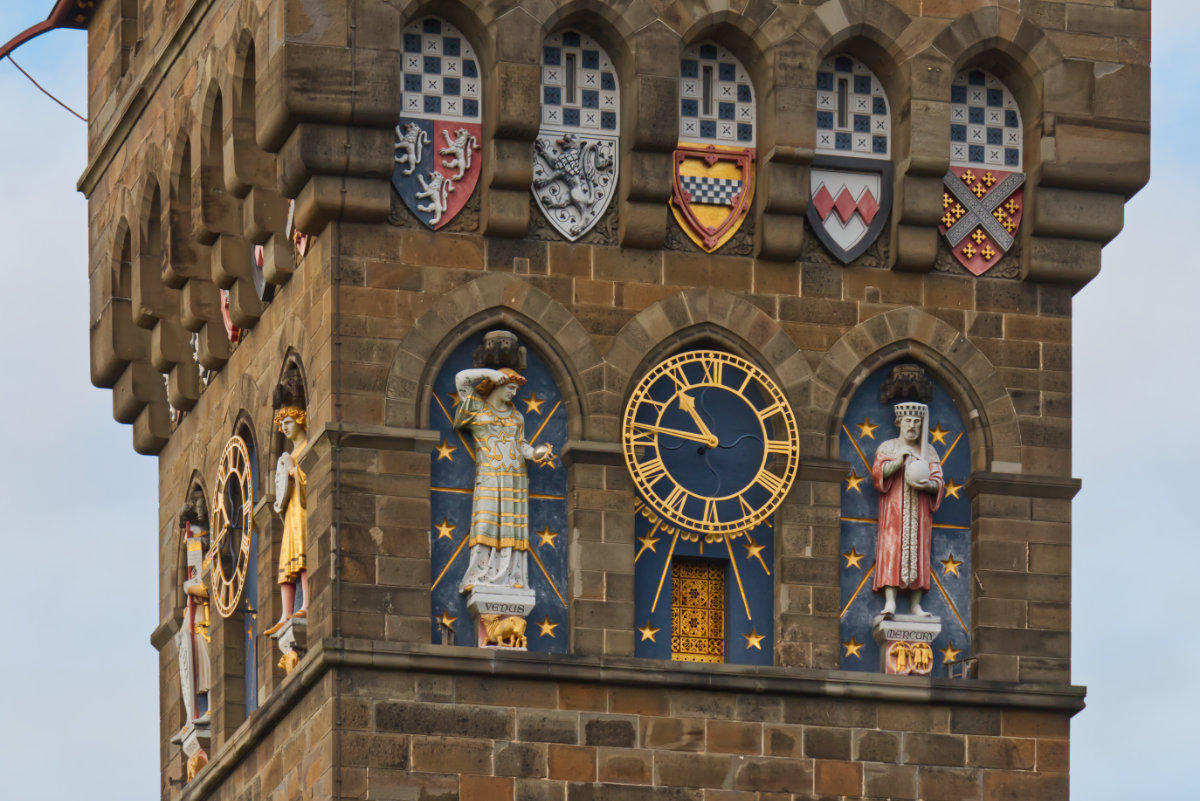
As anyone who knows me will be more than familiar with, I can't visit a castle without looking into its history. As beautiful and well-preserved Cardiff Castle is, I was expecting quite a short and unstoried history - usually, for a castle to survive as more than a ruin it needs to avoid being raised or neglected into ruin and the safest way to do that is for it not to see war. Prior to the modern incarnation of Cardiff Castle, the Romans used the site as a defensive location with the first fort likely built around 55AD. It would have gone through a few versions as the need for fortifications in the area waxed and waned, the border between the Romans and the Silures of the time eventually advancing away from the area diminishing the need for it but the threat of pirate raids by the 3rd century led to a limestone fort being established on the site. It is amazing to think that at the time, this fort would have overlooked the harbour as the sea would have pretty much reached the walls of the fort. This fort would have served likely until the Romans withdrew from the area around the end of the 4th century, where it would remain unoccupied for quite some time...
It would be with the invasion of the Normans, who would build castles (which often reused old Roman sites) to mark their advances, that the first part of modern Cardiff Castle would be established. The first Norman fortification was likely built by 1091, with the motte and bailey serving as an essential hub for Norman control over Glamorgan. The castle was quite a sizeable structure, the motte was the largest built in Wales and the repurposed old Roman Walls gave the castle grounds more than 8 acres of land, with 2 acres inside the inner bailey. Throughout the 12th century, additional defences were added in light of the troubles of the area, with a stone wall established on the South and West sides of the inner bailey as well as a shell keep constructed atop the motte. The town itself also got its walls around this time. By the 13th century, the Black Tower was built, as well as completing the walls around the inner bailey, possibly linked to Llywelyn ap Gruffudd being active at the time.
Cardiff Castle would be sacked in 1321 during the Despenser War, the Despenser family having controversially hung, drawn and quartered rebel Llywelyn Bren. The family were able to retain the castle, and a charter was granted which stated the castle's constable would be declared the de facto mayor of Cardiff. By 1404 the castle and Cardiff itself would fall into rebel hands, with Owain Glyndŵr successfully capturing it, causing damage to the Black Tower and southern gate in the process. The castle would pass through the Despenser line and to the Beauchamp family, who would set about developing Cardiff further - adding more towers, repairing the gateway and extending defences further. The need for such large-scale fortifications would reduce somewhat with the war of the roses, and the end of the Marcher Lords saw the castle leased and sold multiple times, seeing even more developments with a lot of them focusing on more domestic roles - by the 16th century the keep was somewhat ruined but the black tower, still used as a prison, was in good condition.
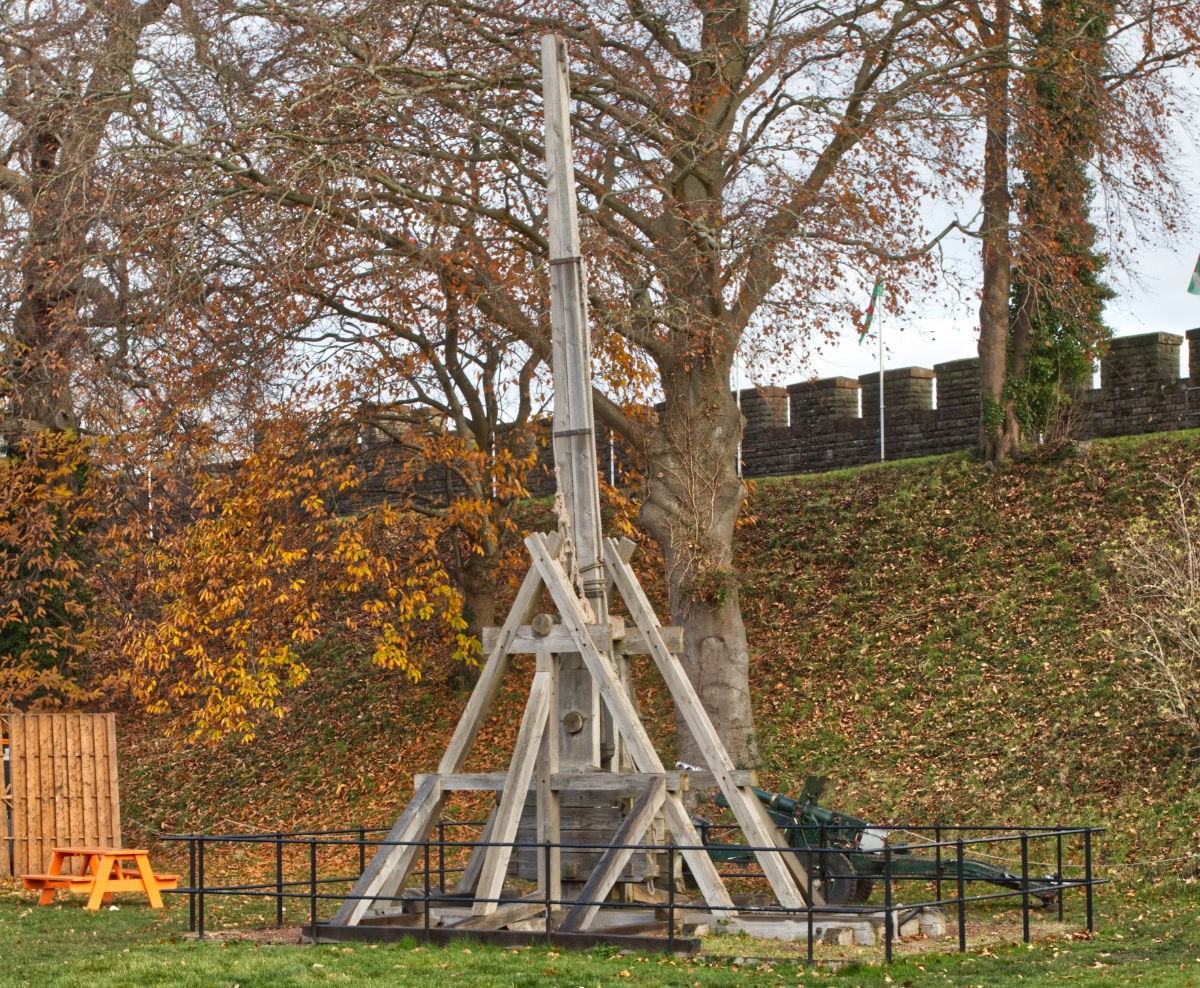
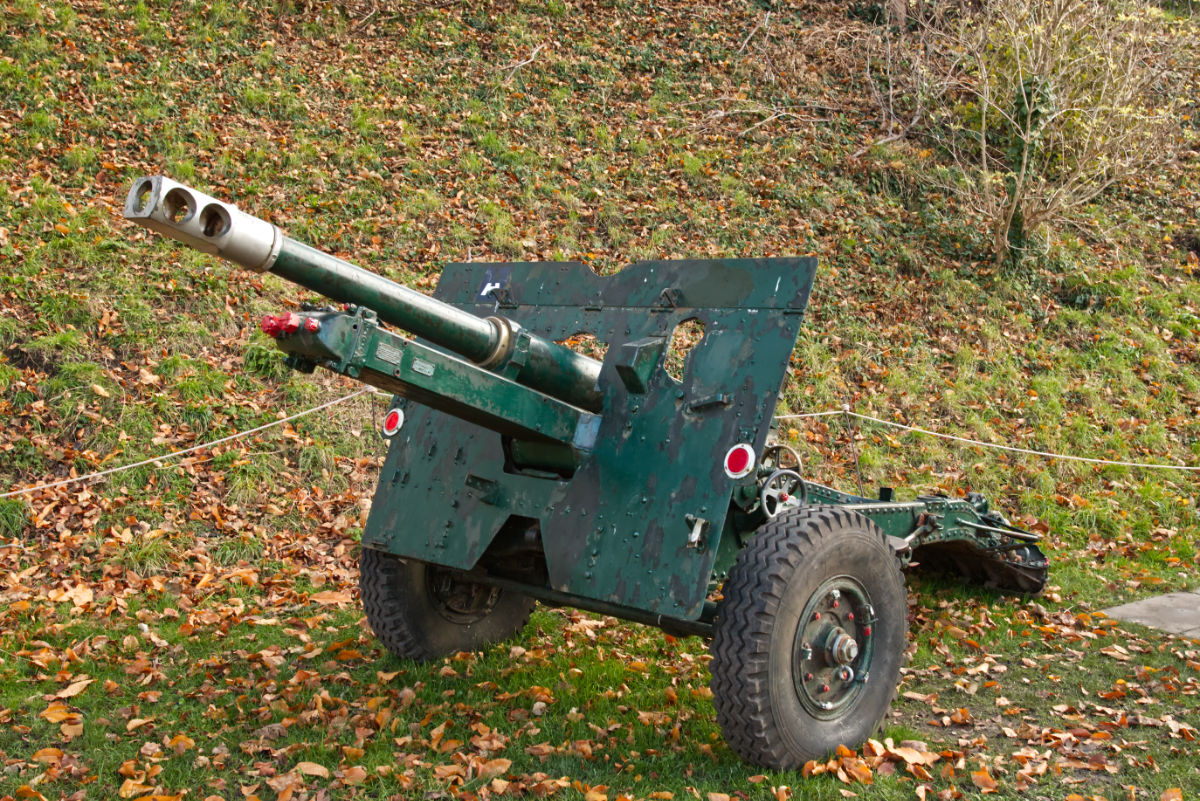
The English Civil War would see Cardiff used as a Royalist Garrison, before being taken by Parliamentary forces, facing siege at the hands of the Royalists and being taken by them, before once again being under siege from Parliamentary forces with the aid of locals, then again, with aid of naval support, the castle was taken back by Royalists. Throughout this time, relations between the locals and the Royalists has become quite poor, to the point that when King Charles visited a local militia greeted him and demanded control of the castle, along with independence for the region - unable to hold their position, the Royalists granted the castle to the local militia. They did try to renege on this deal but were unable to due to their weakening control over the area and the castle was surrendered to Parliament shortly afterwards. Importantly, Cardiff Castle was able to avoid slighting immediately after the war, a time in which many castles around the British Isles were deliberately destroyed, instead, a garrison was installed and the castle was kept functional. It would see no more direct battle and from that point forward, renovations would mostly aim to turn the castle into a residence, with the separation of the inner and outer baileys removed and turf laid and the general landscaping changed substantially.
Cardiff Castle would see somewhat of a re-imagination in the mid-19th century, with its owner John, 3rd Marquess of Bute, looking to make the castle more impressive. It was during this time that things like the Clock Tower were added as well as some of the most ornate rooms such as the Guest Tower, the Arab Room, the Chaucer Room, the smoking room and more. These redesigns stand as superb examples of Gothic Revivalism and were largely praised for their beauty and impressive design work. Huge changes were also applied around the castle, with much greenery planted around the grounds, the establishment of Bute Park to the North and the construction of the Animal Wall alongside the castle. This was the last great period of expansion of the castle, but it marked some of the biggest and most impressive changes - mostly restoration would follow, and many works would be carried out through the 20th century to restore some of the medieval parts of the castle to their former glory. The castle's last function in a war would be during World War II, where the extensive network of tunnels beneath the castle would be repurposed as air raid shelters. Shortly following World War II, the castle would be gifted to the city and made both a grade I listed building and scheduled monument, ensuring its preservation for years to come.
That just about sums up Cardiff Castle, hopefully, that taste of the castle's history as well as some of the beautiful attractions it houses is inspiration enough for you to take a trip to this brilliant spot. It truly has so much to offer, for all different tastes and is not something just for the history buffs to appreciate - with some of the most impressive architecture and even some beautiful sightlines around Cardiff city, you are sure to love something here. If you want more to see and do then you are in look, being in Wale's largest city you are sure going to be able to find something to do, between the wonderful shopping options, the beautiful park right on the castle's doorstep and everything in between I would be amazed if you were unable to find something that interests you. You could even grab a water taxi from the river and check out Cardiff Docks if you fancy extending your day down by the sea. That being said, if you take in all of what the castle has to offer, maybe even a tour of two, it would be easy to spend most a day around the castle alone and it would certainly be a day well spent.
